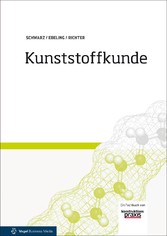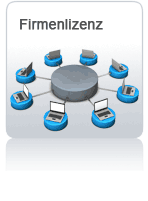Suchen und Finden
Service
Titel
3
Copyright / Impressum
4
Vorwort
5
Inhaltsverzeichnis
7
1 Das Kunststoffgebiet
11
1.1 Entwicklungsgeschichte
11
1.2 Einführung in die Kunststoff-Chemie
12
1.3 Aufbau, Struktur und Zustandsbereiche
33
1.4 Rezeptierung
45
1.5 Lieferformen für Kunststofferzeugnisse
61
2 Thermoplaste
65
2.1 Polyethylen (PE)
65
2.2 Polypropylen ( PP)
70
2.3 Polymethylpenten (PMP)
75
2.4 Cycloolefin(-Co)polymere ( COP / COC)
76
2.5 Polybutylen (Polybuten, PB)
78
2.6 Polyisobutylen ( PIB)
78
2.7 Ionomere
79
2.8 Polyvinylchlorid ( PVC)
80
2.9 Polyvinylidenchlorid ( PVDC)
88
2.10 Polyvinylalkohol ( PVAL)
89
2.11 Polyvinylacetat (PVAC)
90
2.12 Polystyrol ( PS) und Styrol-Copolymerisate
91
2.13 Polymethylmethacrylat ( PMMA), Acrylglas
102
2.14 Polyacrylnitril ( PAN)
105
2.15 Polyvinylcarbazol ( PVK)
107
2.16 Polyacetal ( POM)
109
2.17 Polyketone (PK)
112
2.18 Fluorpolymere
113
2.19 Polyamide (PA)
122
2.20 Polycarbonat ( PC)
127
2.21 Polyester
131
2.22 Polyphenylenether ( PPE)
135
2.23 Polysulfone
137
2.24 Polyphenylensulfid ( PPS)
140
2.25 Polyaryletherketone
142
2.26 Polyetherimide ( PEI)
144
2.27 Polyamidimid ( PAI)
146
2.28 Celluloseester ( CA, CP, CAB)
147
2.29 Polyblends
150
2.30 Thermoplastische Elastomere
151
2.31 Flüssigkristalline Kunststoffe
156
2.32 Biopolymere
158
3 Duroplaste
161
3.1 Phenol-Formaldehyd ( PF)
161
3.2 Harnstoff-Formaldehyd ( UF)
166
3.3 Melamin-Formaldehyd ( MF)
167
3.4 Melamin-Phenol-Formaldehyd ( MPF)
168
3.5 Ungesättigte Polyesterharze ( UP-Harze)
169
3.6 Siliconharze ( SI)
177
3.7 Polyimide ( PI)
178
3.8 Epoxidharze ( EP-Harze)
180
3.9 Vernetzte Polyurethane
185
4 Elastomere
195
4.1 Naturkautschuk ( NR)
195
4.2 Isoprenkautschuk ( IR)
198
4.3 Styrol-Butadien-Kautschuk ( SBR)
199
4.4 Butadienkautschuk ( BR)
201
4.5 Butylkautschuk (Isobutylen-Isopren-Kautschuk) ( IIR)
202
4.6 Chloroprenkautschuk ( CR)
203
4.7 Acrylnitril-Butadien-Kautschuk, Nitrilkautschuk ( NBR)
205
4.8 Polyurethan-Elastomere ( PUR-Elastomere)
207
4.9 Ethylen-Propylen-Kautschuk ( EPM/ EPDM)
211
4.10 Ethylen-Vinylacetat-Kautschuk ( EAM)
213
4.11 Polysulfidkautschuk ( Thioplaste) ( TM)
214
4.12 Epichlorhydrinkautschuk ( CO, ECO, ETER)
216
4.13 Chlorsulfoniertes Polyethylen ( CSM)
217
4.14 Fluorkautschuk ( FKM)
218
4.15 Siliconkautschuk ( Q)
219
5 Analytik
223
5.1 Einfache Methoden zum Identifizieren von Kunststoffen
223
5.2 Differential Scanning Calorimetrie ( DSC)
230
5.3 Thermogravimetrie ( TGA)
231
5.4 Infrarot-Spektroskopie ( IR)
232
5.5 Gas-Chromatografie ( GC)
233
5.6 REM / EDX
234
6 Grundlagen der Kunststoffprüfung
237
6.1 Verarbeitungseigenschaften von Formmassen
238
6.2 Mechanische Eigenschaften
247
6.3 Thermische Eigenschaften
255
6.4 Elektrische Eigenschaften
259
6.5 Beständigkeiten
265
6.6 Prüfung von Kautschuk und Gummi
272
6.7 Langzeitverhalten der Kunststoffe
279
6.8 Weitere Prüfungen
288
Kurzzeichen für Polymere in Anlehnung an DIN EN ISO 1043-1
293
Quellenverzeichnis
295
Stichwortverzeichnis
297
Alle Preise verstehen sich inklusive der gesetzlichen MwSt.












